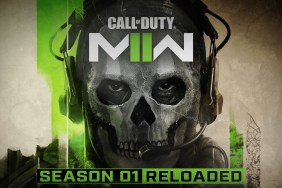Save the Earth from bad acting!!
Gundam was one of the most successful early instances in Japanese animation — typically referred to as “anime”– to popularize the concept of humans piloting giant man-shaped “mecha,” or “mobile suits” into battle. This idea spawned many mecha series in anime and American animation, including the legendary Robotech, and to this day, the entire Gundam series and movies remain true anime classics.
Being a fan of mecha anime in general and having followed the Gundam series for some time, I had great expectations from this new CD-ROM for the Mac and PC. And when I saw the opening video sequence, the bar raised that much higher. Take a good look at the readily-apparent quality that went into the animation for the game. First of all, there’s just an over abundance of full-motion video, filling up every nook and cranny of the CD. Secondly, the lines are crisply drawn and the objects are smoothly rendered.
Once I took a look under the proverbial hood, though, I came to realize that what I had expected to be a mech simulator or at least some kind of action game was, in fact, a puzzle game, albeit one with amazing video and a complex storyline. Not only that, but the anime fan in me was horrified to find nothing else but live action footage of real actors. OK, so maybe it costs less to hire actors than several extra animators, but game companies should realize that many of them simply do not have the capability or budget to produce realistic-looking military uniforms or put together a cast of characters with the necessary acting skills to do anything but lower the dramatic tension in the game. One character, Shar Aznabull, makes for a compelling animated character with his face-concealing mask and majestic helmet, but with a live actor busting out melodramatic lines in a cheap plastic helmet and a mask that smacks of old 3D glasses, I found it hard to hold back the laughter at times.
As with the anime and manga series, it is the interstellar year 0079, seventy-nine years after the human race figured out that overcrowding was a dangerous reality and set off into space, constructing giant orbiting space stations called Sides to house the overflow. But growing pains can breed rebelliousness, and Side 3, the colony furthest from the mother planet, has decided the time is ripe to secede, surprising everybody by brandishing huge battlemecha to not only assert the independence of the newly-formed Duchy of Zeon, but to succeed in taking control of much of the Earth as well. So there you are, mild-mannered civilian on Side 7, forced to evacuate by way of spaceport due to Zeon’s discovery of a testing facility on Side 7 to develop the Earth Federation’s own mammoth Mobile Suits. You are the brash, impatient kid that always manages to show up in these dramatic situations. You get fed up with traffic jams and take a shortcut through a military base, where you accidentally find yourself in the hanger of the Mobile Suit Gundam. And the rest, as the poets say, is history.
Gameplay is uninspiring and simplistic. Four buttons and a keypad are the sum of player controls for the majority of the game, with the depressing general corresponding actions of “attack,” “defend,” “interact,” and “change weapon.” There is no opportunity for free movement whatsoever, as each and every keystroke with the exception of the change weapon function is accompanied by at least ten seconds of video, the biggest downside to inserting an inordinate amount of it into a game. It’s great that the technology is there, and Bandai and Presto (the developer) demonstrate their ability to utilize it to it’s fullest, but sometimes you gotta step back and say, “whoa.”

Not only is the gameplay simplistic, but also there doesn’t seem to be any strategy involved in it at all. Basically, whatever action doesn’t get you killed has to be the right one, and the only way to make it through Gundam is to save your game often and try all the possible actions in a given situation. That’s the other thing. Not all commands are possible at every decision point, only the ones that the computer decides to light up. So even when it seems like you could bust through the two enemy mechs in your way, if the game doesn’t let you – you’re just burnt toast. On top of that, key response didn’t seem to be too sensitive on the machine I played Gundam on; it took a good two or three keystrokes to register some commands, a process that quickly becomes annoying if not frustrating.
When you’re not spending time figuring out how many combinations can come out of five keys, you notice that Gundam utilizes Apple’s Quicktime VR technology to give you a fully-scrolling, first-person view of your cockpit surroundings. When the novelty of seamless 360-degree environments wears off, you realize that Quicktime VR hasn’t yet earned a place in most computer games(Myst type games would be the exception), for it is best suited as a document of live scenery, not anything where fluidity would be of any importance. The third kind of view is a shooting gallery situation, the most action-intensive part of the game. Besides the lack of rapid movement control, there’s nothing wrong with this, except that there’s nothing novel about it, and it must end sooner or later.
When seeing how good the video can be in this game, it leads me to wonder
why the live action sequences have to be so subpar. Besides the plastic uniforms
and painfully second-rate sets, the integration of live props and computer-created
effects is far from Star Trek material. Heck, it’s not even close to Babylon
5. Not to harp on the computer industry’s sense of directing in general or make
any grandiose comparisons to feature films with budgets big enough to design
a thousand computer games–in fact, some games are quite good at the cinematic
element, but if you can’t find a good lighting man to create the right ambiance,
don’t be planning any romantic dinners anytime soon. Acting talent itself ranges
from passable to tomato-attracting, and it’s not hard to see why, considering
computer games are an easy way to start an acting career (There are exceptions,
such as Privateer
2). Of note is Sean O’Hara, who plays Ensign-turn-Captain Noah Bright, most
particularly because he seems to have the inability to utter more than five
. . . words in a row without . . . pausing.
In short, Gundam 0079: the War for Earth is a mixed blessing. Well, not really. If good computer animation and well-crafted mecha fight sequences are your thing, and you can get this disc for free, go for it. If you happen to treasure anything else about anime or computer gaming, you will want to pass this one up.
-
Spectacular Quality Video...
-
Now it just needs gameplay










